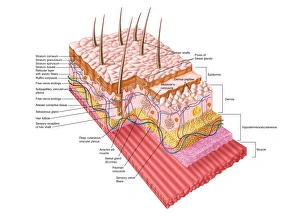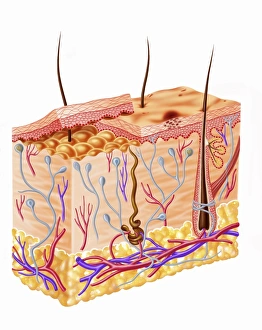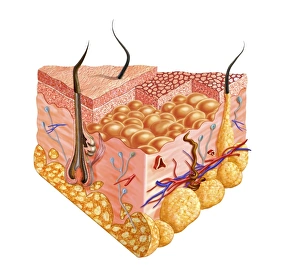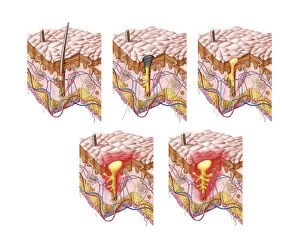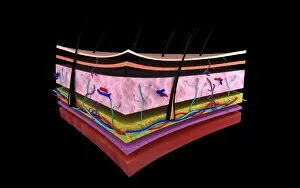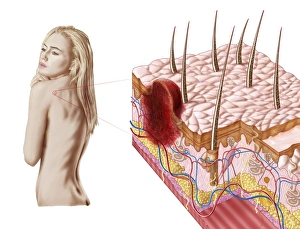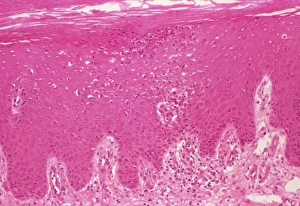Dermal Papillae Collection
Dermal papillae are tiny, finger-like projections found in the anatomy of the human skin. These structures play a crucial role in maintaining healthy and vibrant skin
All Professionally Made to Order for Quick Shipping
Dermal papillae are tiny, finger-like projections found in the anatomy of the human skin. These structures play a crucial role in maintaining healthy and vibrant skin. As we delve into the different layers of human skin through conceptual images, we discover how dermal papillae contribute to our overall well-being. In non-inflammatory acne, these dermal papillae remain unaffected as they do not cause redness or swelling. However, when inflammatory acne strikes, these little projections become inflamed and can lead to painful pimples or cysts. Understanding this distinction is essential for effective treatment. As we explore detailed cutaway diagrams of human skin, it becomes evident that it can located at the boundary between the epidermis and dermis layers. They act as a bridge connecting these two vital components while also facilitating nutrient exchange and waste removal. While studying an illustration of an atypical growth on the skin that could be a sign of skin cancer, we realize that monitoring changes in our dermal papillae is crucial for early detection. Any irregularities should prompt immediate medical attention to ensure timely intervention if needed. Psoriasis is another condition where understanding dermal papillae becomes significant. In light micrographs showcasing psoriasis-affected tissue samples, we observe abnormal thickening of these projections due to excessive cell turnover. This knowledge aids dermatologists in diagnosing and treating this chronic autoimmune disease effectively. The intricate nature of our skin's anatomy emphasizes why comprehending every layer is essential for optimal care. By recognizing both non-inflammatory and inflammatory acne types alongside various conditions like psoriasis or potential signs of skin cancer through conceptual images and diagrams, we empower ourselves with knowledge about our largest organ – the remarkable human skin.

